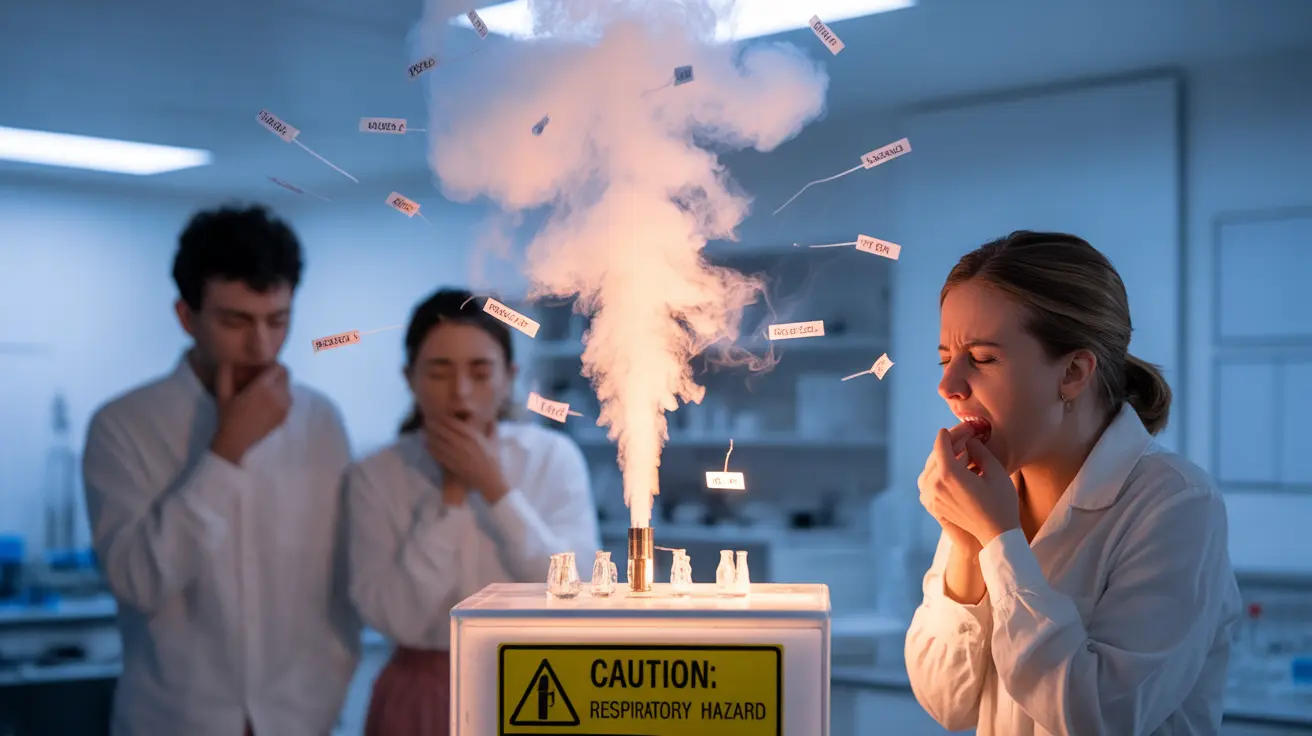As vaping continues to grow in popularity, many people wonder about the potential risks of secondhand exposure to vape aerosols. Unlike traditional cigarette smoke, secondhand vape presents unique challenges and concerns for public health. Understanding these risks is crucial for protecting yourself and your loved ones.
This comprehensive guide explores the reality of secondhand vape exposure, its potential health impacts, and practical steps for minimizing risk. We'll examine the scientific evidence and provide clear, actionable information for both vapers and non-vapers alike.
The Nature of Secondhand Vape
Secondhand vape consists of the aerosol exhaled by e-cigarette users, which differs significantly from traditional cigarette smoke. This aerosol contains a mixture of fine particles, nicotine, flavorings, and various chemical compounds. While the composition may be different from cigarette smoke, it still poses potential health concerns for bystanders.
Chemical Composition and Concerns
The aerosol from vaping devices contains several potentially harmful substances:
- Nicotine
- Ultrafine particles
- Volatile organic compounds (VOCs)
- Heavy metals like nickel and lead
- Flavoring chemicals such as diacetyl
Health Impacts of Secondhand Vape Exposure
Research indicates that exposure to secondhand vape can affect different people in various ways. While generally considered less harmful than secondhand cigarette smoke, vape aerosols still pose health risks, particularly for vulnerable populations.
Effects on Respiratory Health
Secondhand vape exposure may cause immediate respiratory symptoms in some individuals, including:
- Coughing
- Throat irritation
- Shortness of breath
- Chest tightness
- Increased asthma symptoms
Impact on Sensitive Groups
Certain populations may be more vulnerable to the effects of secondhand vape exposure:
- Children and infants
- Pregnant women
- Elderly individuals
- People with pre-existing respiratory conditions
- Those with compromised immune systems
Protecting Against Secondhand Vape
Taking proactive steps to minimize exposure to secondhand vape is essential for maintaining good health. Consider implementing these protective measures:
Indoor Air Quality Measures
To reduce exposure in indoor environments:
- Ensure proper ventilation
- Establish clear vaping policies in shared spaces
- Use air purifiers with HEPA filters
- Keep windows open when possible
Social Considerations
Maintain open communication about vaping preferences and boundaries:
- Request that others avoid vaping near you or your family
- Choose smoke-free and vape-free environments
- Advocate for clear policies in shared spaces
Frequently Asked Questions
Can you get secondhand smoke from a vape, and how is it different from cigarette smoke?
Yes, you can be exposed to secondhand vapor from e-cigarettes. While it's different from cigarette smoke, containing fewer toxic chemicals, it still contains nicotine, ultrafine particles, and potentially harmful compounds. The aerosol dissipates more quickly than cigarette smoke but can still affect indoor air quality and health.
What harmful chemicals are present in secondhand vape aerosol that non-vapers might inhale?
Secondhand vape aerosol contains nicotine, ultrafine particles, volatile organic compounds, heavy metals, and potentially harmful flavoring chemicals. While the levels are generally lower than in cigarette smoke, these substances can still pose health risks to non-vapers.
How does exposure to secondhand vape affect people with asthma or lung conditions?
People with asthma or other lung conditions may experience increased symptoms when exposed to secondhand vape, including coughing, wheezing, shortness of breath, and chest tightness. The ultrafine particles in vape aerosol can irritate sensitive airways and trigger asthma attacks.
Is secondhand vape exposure less dangerous than secondhand cigarette smoke?
While research suggests that secondhand vape exposure is generally less harmful than secondhand cigarette smoke, it still poses health risks. The aerosol contains fewer toxic chemicals, but the presence of nicotine and other compounds means it's not completely safe.
What precautions can I take to protect myself and my family from secondhand vape exposure?
To protect against secondhand vape exposure, maintain good ventilation in indoor spaces, use air purifiers, establish clear boundaries with vapers, avoid areas where vaping is common, and support vape-free policies in shared spaces. For families with children, it's particularly important to maintain a completely vape-free home environment.




